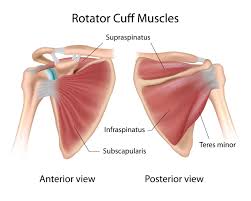Climbing is gaining popularity extremely fast lately which means an increased risk of injury, especially with beginner climbers. Climbing injuries usually occur within the first three years and occur indoor more than outdoor. Why? Poor technique, poor training, and improper warm ups are some reasons why.
The most common injuries occur in the hand and wrist. Shoulder, low back, and ankle/foot follow.
Regarding the wrist and hand, pulley injuries are the most frequent. A pulley is a structure that holds your finger tendon against the bone. When overstressed, it can tear. This results in immediate pain and swelling. When the pulley is completely torn, your finger looks bent. It can be hard to straighten your fingers or grip because of pain.
SLAP tears and rotator cuff strains are common in the shoulder. A SLAP (superior labral anterior posterior) tear occurs where your biceps meets something called the labrum in your shoulder. This is likely to occur with overreaching or catching yourself with an extended arm.
The rotator cuff is a group of four muscles that control your arm bone, or humerus. When it is overworked or put in a compromised position, it can cause instability in the shoulder. That then leads to micro tearing of the rotator cuff. Full tearing is rare in a younger population. In your 50’s, the cuff can tear more easily.
Low back pain with climbing can occur when twisting or when positioning your hips towards the wall. This is likely from excessive stress to the joints, or space between your bones. Core weakness usually goes hand in hand with this type of low back pain.
Low back disc issues are less likely to occur with climbing, but can. Discal injuries usually, but not always, have radicular pain, or pain that goes down your leg. Bending forward can be painful.
Lastly, foot and ankle injuries are seen with improper landing techniques and falls during lead climbing. A bad fall can most definitely result in a foot or ankle fracture. Leading climbing falls can be unpredictable, resulting in an ankle or foot hit against the wall. Refer to the Ottawa Ankle Rules to rule in or out a break.
These are only a few examples of common injuries with climbing. Continue to check in with our blog posts to learn injury prevention techniques. Look for us at climbing gyms in the near future to learn more about climbing-related injury.





